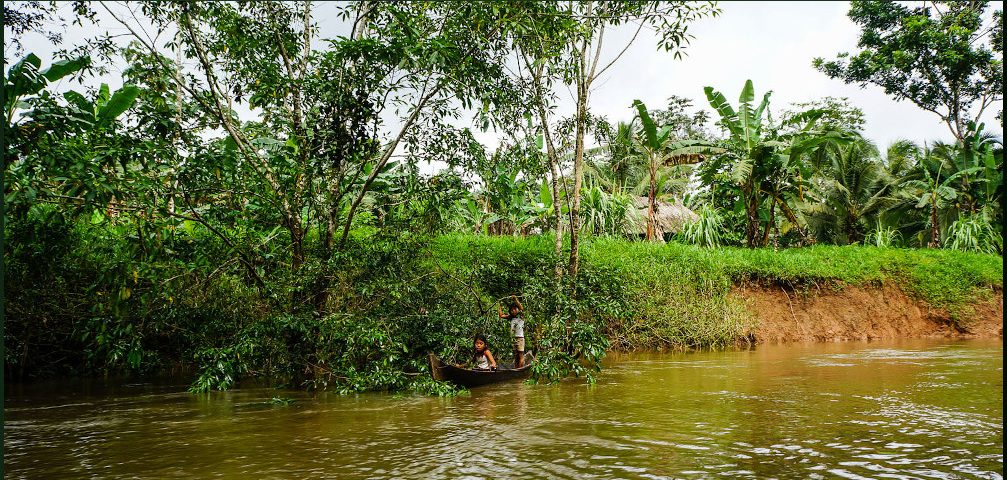by Rick Sterling, excerpted from larger document by Stephen Sefton.
You can download a PDF of this article HERE. [jb]
Nicaragua has an election upcoming on November 7. According to polls, the current Sandinista government is popular and expected to win.
However, the Sandinista government is intensely disliked by Washington and there has been a steady stream of negative news in western media about Nicaragua. One element of negative accusations concerns the indigenous peoples.
PBS Newshour broadcast an episode claiming the US is importing “conflict beef” from the indigenous regions of Nicaragua. This story relied on an Oakland Institute report titled “Nicaragua’s Failed Revolution”. It alleges rampant violence against indigenous communities with a complicit Nicaraguan government.
The PBS story and Oakland Institute accusations were criticized at the time, but there was no retraction.
In the subsequent weeks, despite a looming hurricane, Stephen Sefton traveled to eastern Nicaragua to interview indigenous community leaders and determine the facts. Were the PBS and Oakland Institute reports accurate or not?
Sefton, a community worker who has lived in Nicaragua for 25 years, has published the interviews as a 79-page PDF booklet titled “Nicaragua’s Indigenous Peoples: the Reality and the Neocolonial Lies”. The publication consists of interviews with five elected indigenous leaders plus an indigenous district judge and others. Some highlights of the interviews are excerpted in the pdf embedded below.
Background regarding Nicaragua’s Autonomous Zones
In 1987, the Sandinista government passed Law 28 “Statute of Autonomy of the Regions of the Atlantic coast of Nicaragua”. This law gave legal support to indigenous claims. However, progress was undermined by post FSLN governments which governed Nicaragua from 1990 to 2006.
In 2005, the FSLN was still in opposition but secured passage of Law 445; “Law of Communal Property of the Indigenous Peoples and Ethnic Communities of the Autonomous Regions of the Atlantic Coast”.
As a result of these laws, approximately 31% of Nicaragua’s territory is considered communal property owned by the indigenous and Afro-descendant peoples of the country. With such a large area, what about the non-indigenous Nicaraguans who live there?
According to the Oakland Institute report, “government officials are complicit in land invasions” and the solution requires “clearing the indigenous territories of colonos and corporations”.
Is this accurate or a distortion?
The interviews with elected indigenous leaders indicate the Oakland Institute description is a distortion and their “solution” is a recipe for violence.
Sefton interviewed an impressive and diverse set of indigenous leaders. With photos at bottom they are:
Arisio Genaro Selso (President Mayangan Indigenous Territorial Government) ; Eloy Frank Gomez (Secretary Mayangna Indigenous Territorial Government); Fresly Janes Zamora (President of the Miskito Indigenous Territorial Government Twi Yabra); Ronald Whittingham Dennis (President of the Indigenous and Afro Descendant Territorial Government Karata); Rose Cunningham Kain (Mayor of Waspam and President of the Indigenous Territorial Government of Wanghi Awala Kupia); Dr. Loyda del Carmen Martinez Rodriguez (District Judge of Waspam, Rio Coco); Lejan Mora (President of Indigenous Territorial Government of Wangki Twi / Tasba Raya).
Key Questions and Answers
How did the colonization of indigenous lands begin in the current era?
Arisio Genaro Selso:
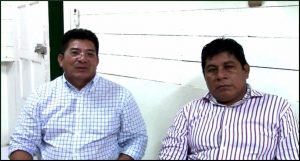
Arnoldo Alemán (President 1997-2002) was the one who started and promoted the issue of what we call colonization by mestizos of the Caribbean, with the purpose of destabilizing the whole Autonomy project, which was being developed at that time. The Liberals led by Arnoldo Alemán wanted a strategy to disappear the Autonomy project in the Caribbean …. to invade the Caribbean Coast with a mestizo population.
The invasion of indigenous lands towards the Caribbean Coast started in the late ’90s, in the time of Arnoldo Alemán when he was in the government.
The situation is complicated because some mestizo farmers purchased the land. How did this happen?
Eloy Frank Gomez:
Yatama (indigenous opposition party) mayors and deputies of Yatama were involved in the sale of indigenous lands. The community members didn’t know. The mestizos came in big numbers, families after families entering indigenous territories, for example in the area of the Rio Coco.
In certain areas of our communities in the Bosawas Reserve, which borders with Miskito land, many mestizo settlers came to enter our Mayangna lands. But how? Through these sales authorized by politicians from Yatama.
It’s no secret that Liberal mayors and municipalities with mayors opposed to the government also promoted land trafficking, even financed organized groups, armed groups to invade indigenous lands and to dispossess the indigenous people of their lands. There is evidence of that.
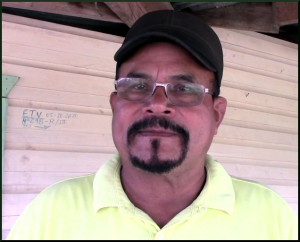
Lejan Mora:
YATAMA leaders were the ones who started selling land. We have documents showing they were the vendors. Who were the buyers? People from the Pacific, who don’t have land. So, they began selling, they began doing business, and that is where the problem of land invasion arose.
How are relations between the indigenous leaders and the Nicaragua government?
Arisio Genaro Selso:
Before there was this great project for Bosawas it was worse. There was no consultation, the decisions weren’t taken by the indigenous communities. However now things are different.
So, this is an opportunity for the indigenous peoples, this recognition, this respect of the government towards indigenous institutions, towards indigenous peoples and this also allows indigenous peoples to participate directly and broadly in the decisions that are being taken.
Progress has been made. Why? Because the government authorized the creation of a body within the courts, namely the figure of Defenders of Indigenous Peoples was created, wherever there is the presence of indigenous population. What is the function of these Defenders? It is the direct accompaniment these Defenders provide to the indigenous organizations for the judicial process of settlers, those who are destroying the environment, all these types of cases. So, there is greater accompaniment.
And the other important element is that we have also achieved within the judiciary, our indigenous officials also hold positions in the courts. So now the recent appointments of the Defenders of Indigenous and Afro-descendant Peoples are also indigenous people who speak the indigenous languages. That is the other element, which for us is vital.
The government has guaranteed, that in all the municipalities where indigenous peoples are present there will also be functionaries who speak indigenous languages.
Are cattle being raised for export in the autonomous zones?
Arisio Genaro Selso:
In the lands that correspond to the area of the Reserve where our territories are located, there is very little cattle ranching … it is on a minimal scale. In the Caribbean Coast there is cattle ranching, but more in areas that are not indigenous territories, but there is ranching on the Caribbean Coast on private properties, where people from the Pacific have come to buy private property and what they have done is perhaps double the rate of cattle ranching.
Rose Cunningham Kain:
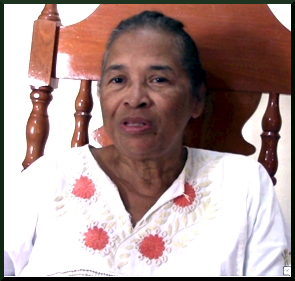
Cattle here have been like pets in other countries. And little by little we have been making a shift to having more cattle. But here there has been no certification process to permit meat exports…
The people here supply the local market and, as often as not with some difficulty, we manage to find someone who wants to butcher their cattle for the local market. Of course, in the last few years we have been encouraging people to improve their cattle stock, so that IPSA can do its work teaching us how to improve our cattle rearing.
But we keep animals on a very small scale. So, this report saying that settlers are killing us for land to raise cattle on is not true either. That is not true. Not one cattle rancher has died here, not one Miskito involved in any kind of cattle related killing. It’s a Disney World story, maybe, a Mickey Mouse story, who knows. But it is not a real story of this municipality Waspam or any of these municipalities where there are indigenous peoples.
I would say that when in the United States or in any part of the world it is said that indigenous people are killed here to promote cattle ranching and that beef from cattle equals indigenous people’s blood, that is one of those stories. It is one of those stories. They are inventing and living off stories about indigenous peoples. And in the whole world of the indigenous peoples’ movement, we deplore, we condemn this type of accusation involving the indigenous peoples.
From Nicaragua or from any part of the world we are always going to find nefarious people who want to invent this type of story to benefit themselves. And they do not really work from the cosmogony vision of our indigenous peoples, respecting our lives, our human rights. Respecting our history, our culture, our dignity. They play with the dignity of indigenous peoples, and one feels sorry for those who take seriously the people who want to promote that story.
What is the role of foreign funded NGOs?
Arisio Genaro Selso:
There are organizations, NGOs that use the name of the indigenous peoples and indigenous organizations to make accusations against the government, to denigrate the government, to try to destroy the government’s image and that of the work it does within the protected areas, for example, in the case of the Río San Juan, for example, or in the case of the Indio Maíz Reserve, and here in the case of the Bosawas Reserve.
What is the role of the Center for Justice and Human Rights in the Atlantic District of Nicaragua (CEJUDHCAN) and its leader Lottie Cunningham?
Arisio Genaro Selso:
CEJUDHCAN is not the institution she claims or projects at the international level, as an organization or institution defending indigenous rights.
Why doesn’t she ever consult us? Why doesn’t she come to the communities to consult us? Why not our national leadership, which is who we are, leading the national government of the Mayangna Nation, or else to the presidents in our territorial governments…? She is not present. She speaks from afar. She uses the indigenous name. She uses it without having been there when the events are taking place. For example, when the Alal case occurred, up there in the Reserve, she said that the government was not defending the indigenous people.
In practice, Lottie works with opposition activists. They are people who live as we Nicaraguans say, making accusations against the government, talking badly about the government. So, she takes that and exploits it to say that the government does such and such, but really if it were the organization, she says it is, she should be open to consultation. But she is not. She just turns up for a short while. And sometimes she exaggerates things. And she makes use of the indigenous peoples.
Fresly Janes Zamora:
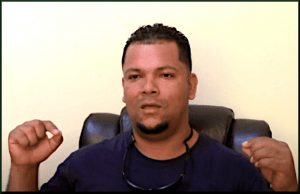
CEJUDHCAN does training on the rights of indigenous peoples. But at the same time, they have another interest. Two programs came to my territory, that they are going to help me, that are going to help me with remediation, this, and that… We said, look, these are our conditions and priorities. So, help me on such and such a matter.
For example, when in my second year as president, they saw things were going to improve, change, become more formalized, they did not like that. Why? Well, as long as there are incidents, then there are conflicts, so for them that means there is always funding. So, what did I do? I told them, I sent two letters, saying that we want nothing to do with them. We no longer want to have a relationship with them
Because the thing is that they want to drag things out to get some benefit. The benefit is meant for us. But since they are intermediaries, they are the ones who administer the resources. So that is why we said no. In a territorial assembly I said, we are no longer going to continue with this organization because they are promoting violence in the communities.
Rose Cunningham Kain:
I think that, like this person, there are many who take advantage of the poverty and conflict of others. That is not and never has been the spirit of the creation of non-governmental organizations. For me, non-governmental organizations should not want to profit from poverty or people’s conflicts. And when I say poverty, it’s not that we are poor.
We have been impoverished by the same people who have funded the people who say that we live in conflict.
It is a big lie. We have not had that kind of conflict for many years. We are building peace. Peace is not just words. Peace is a process. And the social reinsertion after the eighties, when the counterrevolution was also financed from the north, that peace process that led us to Autonomy, we continue to weave it, we continue to build it, and we continue to strengthen it. And today, after 33 years of Autonomy, we feel, and I feel proud to see how our community leaders are able to give you an interview and tell you the reality. And they know where the bad is and where the good is.
Lejan Mora:
I have seen the video that Lottie released. She says every pound of meat that sold to the United States is a drop of blood of the Miskito. Which is totally false. I don’t know what her objective is in spreading so many lies. Because it has nothing to do with anything real, nothing at all. These are not right. I mean, a lie of such magnitude.
How are relations between indigenous and mestizo settlers?
Fresly Janes Zamora:
From the 1980s to date, if that person lives in that area, in that community, they already know the language, the culture, they already live with the same culture. The children, for example, are already over 30 years old. So, all these things give them that right. But what happened? The problem of the invasions started after the year 2000.
It was difficult for the communities… they didn’t even have the authority to make decisions. So, what happens then? From 2013 onwards, we do have that dominion.
We have that dominion, and we do still have that conflict, not with the government, not with the State of Nicaragua, but the people, the mestizos themselves are invading properties. Because as I told you, we conserve areas. Our ancestors, that is our culture. We are few but we have large tracts of land, because they are the areas where we go out to hunt animals, to sow our crops, to fish. So, these are areas where we as indigenous peoples abide. That is our culture.
So, we now have the title. We have … dominion, we do have now, and the government, the State recognizes it. The only problem we have is that sometimes outsiders want to invade us or are invading our property. So, something that we must teach them is to recognize that they are our lands, and that this land is not empty and unclaimed.
It has an owner. And the owner is the indigenous peoples. Therefore, although they do need land, they must coordinate, to reach an arrangement, to engage in dialogue, a negotiation with the owners
Sometimes we have a conflict, for example. With two, three, of the ten mestizos that are within our lands, not all of them agree to recognize us. Always, in everything, there are two, three families that do not agree, that do not want to recognize us. So, what do we do?
When this is the case, we visit the place, because it is our land, and we go in a commission to explain to them the internal regulations of our communities, or the internal regulations of the territory. If they agree, we can reach an understanding.
We can sit down and start a dialogue, negotiate. Because the lands cannot be sold, even if I want to sell, I cannot, even if I want to give them away, I cannot. Because that’s a crime. But yes, the land can be leased.
So, what we are doing is, as Twi Yabra, we are leasing land. We are leasing land, after several lawsuits, there was even bloodshed. But what good is that?
Rose Cunningham Kain:
Here in Waspam we are practicing coexistence with those who have come to settle in Waspam. So, in this municipality we have different models of relations with non-indigenous peoples, with non-indigenous settlers. At this moment in the context of the hurricane, we have also had news of agricultural losses these non-indigenous people have suffered too. And as the mayor’s office we have to listen to them because they are Nicaraguan citizens. They have human rights. They are human too.
What is true is that we always call on them to reach agreement with the indigenous peoples. Either they leave or they come to an agreement with the owners of the land. The last violent activity must have been in about 2013/14. We have not had violent activities in this part of our territory. Here we have seen meetings where people speak their minds. We have documented meetings that have taken place in the mountains between non-indigenous settlers and indigenous settlers where 17 communities, leaders of 17 communities, come together and walk to meet at a certain point.
What is the process of remediation (“saneamiento”)?
Fresly Janes Zamora:
Remediation is an issue still outstanding, it is a process, a final stage because the other stages have already been completed. And no one can say that, because they have not completed that last stage, which is remediation, the indigenous communities do not have dominion. We have dominion. The communities, we recognize that the communities are the owners, the State recognizes that the communities are the owners.
Lejan Mora:
We’re in the last phase of the remediation, which is clearing the boundaries, the inter-territorial limits and so on. So, we are at that stage right now. I remember very well indeed that in 2015 there were clashes between Miskitos and those who were invading the land. But that came about thanks to the same situation that has been… occurring.
The political opposition are insisting on self-remediation. So, the people in the communities rise up, get involved in confrontations, and then they persist, and that’s how it happened that, I think there have been four or three deaths, something like that.
We invited the settlers and we sat there under a tree. We started to make a presentation of the real situation there because they know very well they are on land that does not belong to them, we presented this to them. And we have shown them what and how might be the most appropriate way forward. It is a negotiated way, not through confrontations or anything like that.
We talked and reached an agreement that… because there are people who have been on that land for several years. And that land where they are located, they got it because another territory sold it. One territory agreed the sale, but it is a piece of land that belongs to a different territory.
So, it is a bit of a complicated situation. So, we talked with them, and precisely this coming Wednesday we have planned to go and prepare the ground for to another type of approach, namely leasing. We as the territory of Wangki Twi have not yet taken that approach but seeing the situation and to alleviate it a little, we must take that step. To what end? To a point we regard as feasible for creating a calmer and more durable situation, so that there are no conflicts.
What about “self-remediation”?
Fresly Janes Zamora:
The opposition is promoting violence between indigenous and mestizos… Self-remediation means promoting violence between indigenous against mestizos.
So, when they throw a stone, someone else will throw stones.
Why do they send NGOs and programs for this? … On paper it says one thing, but on the ground it’s something else. That’s it. So that’s what they are promoting. When there is no fire, there is no money. As I told you, things are calm, things are resolved, but that’s what they do.
So, we as Twi Yabra territory are against those people. That is why we are not involved with any organization. Because at the beginning we thought they entered in good faith to support us. But during the execution of these projects, of these visits, which they did in my absence, they were already doing other things. We immediately prohibited their visits to our communities because they were trying to destabilize the structure of the territorial government, the structure of the communal authorities and at the same time to bring violence between the Miskito peoples and outsiders, so we are against it.
What about media claims that a little girl was shot in the face by a land invader?
Lejan Mora:
In the case of a girl where a 13-year-old boy was handling his father’s handgun inside the house. The gun went off and the bullet pierced through here and came out here. What did they do when that accident happened? The creators of fake news took charge of spreading the word through the media, through Facebook, claiming that a lot of men appeared, 200 men and attacked the community. And we showed that was false. We went to the house and to the community.
We interviewed people. We even visited the site where it happened. Everything was false. But that information spread internationally as if it was something real, which is untrue. Today even we could go… if we go to the community, we can go and talk also to the mother of the girl about what happened, and she can tell us the truth.
How are relations between the Mayangna and Miskito communities?
Arisio Genaro Selso:
During the ’80s the ethnic war in the Caribbean Coast was also not only against the government, but also between the Miskitos and the Mayangnas. There were conflicts and before there has been a history of antagonism.
Both we and the Miskito sisters and brothers have realized that this is a thing of the past, and that the reality is different now and we must be united as peoples.
And that has strengthened us and has brought us progress and has allowed us to do many things. So, we have come a long way and we have overcome the past.
The last stage of the transition in the autonomous zones is remediation (‘saneamiento’). What is the status of this?
Arisio Genaro Selso:
We have to understand that the concept of remediation does not directly imply eviction. In other words, it is not only eviction.
The issue of remediation also has different concepts from the point of view that remediation also has to do with the way in which we establish the mechanisms for coexistence. We cannot enter a situation where there is already conflict, and go and stoke that conflict even more, but it has to be a strategy proposed by the indigenous peoples.
In these cases of extreme situations, where indigenous people are no longer allowed freedom of movement, freedom to produce, and feel under siege, we cannot allow it. We must evict. And so, we coordinated with the government institutions and the evictions of the 140-odd families in the area of the Reserve were carried out in coordination with our government institutions.
So, remediation is not only ordering evictions, but dialogue is also part of it. And it also has to do with the process of reviewing indigenous properties.
For example, there are rural families who once went and bought indigenous lands and went to register them in the property registry of the region, but they cannot, the law says no, it is not allowed, it is illegal.
So, remediation is also part of that, reviewing all the documentation and if people went and register it when it was indigenous land, well, a revocation is made. This is also part of the remediation; it is part of the reordering of the territories. So maybe the position of someone like Lottie who goes around saying that the remediation is not being done or that such and such is being done, is not correct.
How has recognition of indigenous ownership evolved?
Fresly Janes Zamora:
I am president of the GTI (Indigenous Territorial Government) Twi Yabra. Our territory is made up of 16 communities. I am the representative of those 16 communities. We are 100% indigenous Miskitos.
So, in the case of us as Miskitos, our relationship with third parties, like the mestizo brothers, on the issue of property, yes at the beginning, before 2014 we can say that, to us the mestizo brothers did not recognize the rights of indigenous peoples.
So, when the Sandinista government took over (in 2007) that was one of the main points, because the biggest demand of the indigenous peoples was that they requested, they demanded that this demarcation be carried out and that they recognize that we are the original peoples and therefore we are the owners.
That process took years because there are 23 indigenous territories and, you know, it had five points, five stages. So, this process took almost ten years. Because there were five stages, the consultation, the harmonization. Then, in consultation, in what was the prior, free, and informed consent authorized by each community.
Now back to the issue of how we relate to the mestizos. The mestizos, their culture is to work extensively, not just in cattle farming, but also in agriculture. Because they need to eat too. They need to feed themselves too. They have families too. So, what does that mean? After we received the title deeds here in Twi Yabra, the 23 territories have their title in their hands.
But there is another stage, a final stage, the remediation, which is what they insist on, that they need remediation, remediation. But to clarify indigenous lands is a complicated issue. It is not just a matter of expelling outsiders. It also means making clear with our own brothers and sisters the delimitation of intercommunal boundaries, intercommunal limits.
Ronald Whittingham Dennis:
Now, in a few communities, there are problems with remediation, but we also have to see some realities, realities that we, or at least in my case I have seen, because I have gone to some of the territories and I have seen that there are people from the self-same communities, authorities of those same communities that have sold land, sometimes up to 350 hectares, or as much as 700 hectares.
There are people who say remediation is to clear out, to get everyone out, one…. But some people say no, remediation is to seek an understanding, to remediate is to reach an understanding. And part of that understanding is the well-known term of reordering. That is the concept.
So, what does it mean to reorder? It is not that the mestizos or the outsiders that are within your territory, within your area, that they are going to decide where they are going to be. You will tell them where they are going to be. That is reordering. And how much you can give in the portion of land. That is the zoning.
It is a component for solving problems. Now in that reordering you also have to see who will go and who can stay. That is reordering.
The State provides that through the Army and the Army’s Ecological Battalion, and no territory can say that’s not the case. They have indeed provided accompaniment. They have provided accompaniment.
If a member of the community sold a certain portion of land for whatever reason, you are forced to sit down and negotiate. To see what can be done. And to negotiate you have to do so in a spirit of wanting to solve the problem. But if there is no will to resolve the problem rather than to create more problem, then you will never solve the problem.
So, you have to look for strategies on how you are going to resolve it. Because these people who have already, imagine, who have already come to live here for fourteen years, fifteen years, they came to plant their crops, they have their own livestock, they have their animals, they are already well established.
And that is what we in the territories have to understand. The damage is already done. What we have to look for is how to resolve the problem.
What do you think of foreign reporting on this issue?
Ronald Whittingham Dennis:
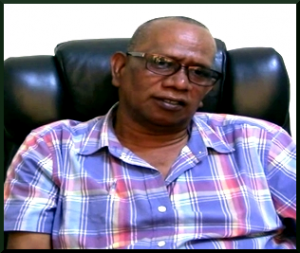
There’s news that spreads overseas that are… examples of manipulated information, of various falsehoods that are not based on reality. And this information is one-sided.
I think no information internationally can truthfully say that in the Atlantic Coast of Nicaragua and the Miskito, Afro descendant, Mayangna indigenous peoples there is conflict because there is double election or there are demonstrations, have you seen any? No one has seen any. Not one. They just say that. But it is not the reality. That is not the reality. There is information that appears…Now, if we in this world did not have, if there had been no problems, this would not be our world, it would be a paradise. In every country there are problems…
What happens to settlers who are violent or refuse to leave the indigenous areas?
Dr. Loyda del Carmen Martinez Rodriguez:
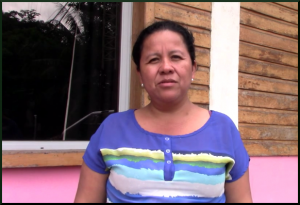
We have prosecuted six cases of usurpation of communal domain of indigenous peoples, where people who are not natives of that community have come to misappropriate land of indigenous peoples. So, how has this procedure been carried out? In the territories, the owners of the land, who are the presidents of the territorial governments, file a complaint with the National Police. The National Police receives these and does all the investigative work. Then they refer the cases to the Public Prosecutor’s Office, and the Public Prosecutor’s Office files the accusation before the Single Local Court. We have sentenced these people with the maximum penalty of 3 years and have thus sent them to the penitentiary in Managua or Matagalpa.
The State has vindicated the indigenous and Afro-descendant peoples’ right to the land, and the State is also a guarantor in the efforts to secure social peace in our country and in our region. It is a process in which the State has guaranteed and has given those peoples this right, but the political opposition always does not see this. They also say that the cases we have prosecuted are of little importance. But no. The indigenous peoples are being protected and the rights the indigenous peoples are being vindicated. And the State has contributed a great deal to this because no other government had ever recognized the indigenous peoples, giving them a title to what before was only private property, where only the oligarchy and the bourgeoisie had the right to own land.
Also, I have participated in dialogue between mestizos and Miskitos in which there are territories that want to resolve the remediation process by means of a leasing agreement with the territory. They make the proposal, then the territory, its president will decide if they are going to lease or not. So, we have carried out these procedures as a judicial authority… by way of accompaniment, then. So, you see, we have participated listening to both parties, the mayor of the municipality has invited me to participate and listen to proposals made by the non-indigenous party.
Likewise, we have made progress in this aspect of property remediation, and we are not trying to drag it out, although the opposition always sees it like that. But there has been a lot of progress, because there is a dialogue between mestizos and Miskitos in which the State guarantees as established in Law 445 that those communities, that now have their legal title, can lease their land and that is allowed by law. But this is something that as regards the State and the territories, each territory president is able say whether they want to lease or not.
Lejan Mora:
We’ve stopped the invasion that was taking place. By applying that law, we are able to get people imprisoned via a judicial process. We get them imprisoned and they end up with three-year prison terms.
And that is how we are trying to calm the situation. And later, we seek to reach a peaceful solution, without confrontations or anything else. The issue of territorial rights here in Nicaragua is something new for us. What the current government has done for us is a very good thing.
Summary
Those who are interested to learn more facts and perspectives on the situation in Nicaragua’s autonomous regions are encouraged to read Sefton’s entire book. The different leaders have different experiences and perspectives on certain issues. There are many rich insights and subtleties in the full text that could not be included in this short summary. Sefton has provided a valuable service by conducting, transcribing, and translating these in-depth interviews which present a vastly different image than that portrayed by western funded NGOs and media.
